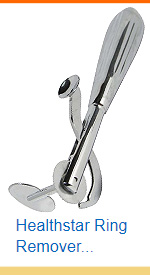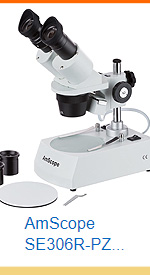WHAT A MICROSCOPE TELLS YOU
THIS IS WHY YOU MUST MICROSCOPE DIAMONDS!
This post contains affiliate links. If you use these links to buy something I may earn a commission. Thanks! As an Amazon Associate I also earn from qualifying purchases.

I absolutely advise using a Microscope when you buy diamonds.
I know many people feel uncomfortable around them, they don’t know how to use them, they don’t know what they’re looking at, they feel silly and geeky viewing diamonds…
But I tell you:
IT’S A MUST!
For 10x magnification tells you so much about a diamond. Much more than you’ll ever know.
So even if you feel a little foolish trying to find small inclusions in the stone, don’t be afraid to ask questions. And don’t hold yourself back from adjusting the knobs yourself (to bring different areas of the stone into focus). Or even rotating the diamond to get a different point of view. Like from the side, or even upside down.
That way, you can truly see what’s inside the stone and what you’re paying for.
Because these are things you’ll be able to see with a microscope:
Clarity
First and foremost, you’ll be able to see all the imperfections in the stone (like peering under the hood of a car). You’ll be able to see how big they are, where they reside, and if they take away from the beauty of the stone.
You’ll be able to compare different clarities, see the flaws, and make a much better buying decision.
Plus, you’ll be able to match them up with the flaws on a diamond plot as well.
Extra Facets
Extra facets are fun to find. And a lot of diamonds have them. Extra facets are usually added to a diamond to cut out an unsightly imperfection (they also list extra facets on a diamond report). When those flaws that fall on the outside of the stone are removed, it actually improves the clarity and value of the stone.
You’ll normally find extra facets on the bottom of the stone, or pavilion. Look for them under the girdle. Normally they don’t affect the stone much, unless you have a lot of them. And then they can change the appearance of a stone, as well as the way light interacts with the diamond.
Polish
You’ll be able to turn the diamond so the light reflects off the surface of the stone to observe how the polish looks. Is the surface perfectly smooth? Look at all the facets one by one… Do you see lines? Growth marks? Polish marks? Bumps? Ripples? A smooth surface lets light through effortlessly, while a wavy or uneven surface can distort light and even make it look foggy or blurry.
Naturals
You’ll also be able to see little rough areas on the girdle, that are called naturals (the natural rock). These are like a knot in a tree. It’s just a piece of the natural rock that’s grainy, bumpy and usually dug out like a cavity. Naturals are also where you’ll more than likely find trigons. Trigons are the actual growth patterns of a diamond. They grow in triangular formations like an upside down pyramid and usually accompany naturals. Look for them. They’re fascinating!
Laser Inscriptions
If your diamond is laser inscribed (GIA usually inscribes diamonds under 1ct – these are usually with dossier reports). The laser inscription will be located right on the diamond’s girdle. Etched right into the side of the stone will be the diamond report number, so you can always identify your stone. And, you can match those numbers up with the report, and also double check them with GIA’s diamond report checker HERE! That way you’ll know that the diamond and information is accurate, and that you aren’t getting ripped off, or that your diamond isn’t switched!
Culet Size
Put the diamond in the microscope so you can look straight down into the stone (through the table). The dot in the very center, where all the facets meet up, is called the culet. Viewing the culet can tell you many things. First, it should be perfectly centered. If it’s not dead center, the symmetry of the stone is probably off.
Also note the size of the culet. It should be small and insignificant. That way it doesn’t detract from the appearance of the stone. But if the culet is really large, or extremely large, it will stand out like a sore thumb. You’ll be able to see it even without a microscope, and it’ll look like a hole in the stone (many say it looks like a bullet hole). A lot of older cuts of diamonds have large culets. The best culets to get are small or none.
And one last thing you should look at… If the culet’s chipped or not. See if the edges of the culet are crisp and clean. They should look octagon. If the culet is jagged or you see hairline fissures extruding from the facet, the culet may be chipped.
Girdle Thickness
Now look at the girdle of the diamond again. Is it really wide? Thick? Is it uneven in some spots (like really thick, then really thin? – like a flat tire) It should be pretty even all the way around, with even rises and falls (called hills and valleys).
And while you’re looking at the girdle, double check that it’s not chipped. Look at it all the way around, because this is the #1 spot where a diamond chips at.
Aligned Facets
Now look to see if the facets on the top of the crown (above the girdle), line up with the facets on the bottom of the diamond (the pavilion). These should all point up and align with each other if the symmetry of the stone is good. If not, the lines will be all over the place, and that diminishes sparkly and brilliance.
Table Size
Look at the table of the diamond again. View it on an angle so the light reflects off the facet. Is it octagon in shape? Is the shape symmetrical? Even on all sides? Or is one side longer than the other? Is the shape skewed or distorted? If so, the diamond may have a bad make.
Plus, the table facet should take up about 60% of the entire width of the stone. If not, the diamond could look smaller, lumpy, and maybe even dark in the center (called a nail head). Likewise, if the table is too large, then the diamond can look glassy, transparent, and it could have a dark ring around the table (that resembles a fish-eye).
Laser Drill Holes
Now really scrutinize the stone. See if you can find little tiny holes in the pavilion of the diamond. These holes are laser drill holes and many altered or enhanced diamonds have them. This is where a laser has literally drilled a hole into the side of a diamond, directly into a black inclusion, for the sole purpose of burning out that inclusion, or dissolving it away so it’s not black anymore. By doing this, the diamond looks better because you don’t see that ugly spot anymore. It’s good if you know that it’s been done…
But if not… It’s actually fraud! This is why it’s very important to only buy certified stones (and always GIA). For if it’s not been certified, jewelers can up the grade of that stone (because it looks like a better quality stone), and sell you something that isn’t what they said it was.
And, if a diamond is really badly included and has many drill holes, this can actually weaken the stone and make it brittle! Not cool.
So looking at a diamond under the scope is vital.
All this from a microscope (which you can buy yourself at Amazon here!)
Grab a Scope. View a Stone.
It’s a fascinating world, but one that you can only see when you magnify.
Cheers! :)














Leave a comment